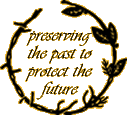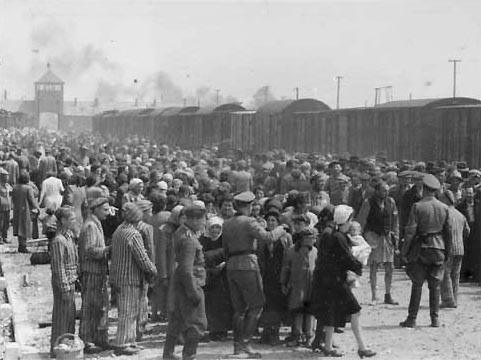|
|
||||||||||||||||
 |
||||||||||||||||
|
. |
||||||||||||||||
|
||||||||||||||||
|
||||||||||||||||
|
Photo Credit: Yad Vashem, The Auschwitz Album |
||||||||||||||||
|
||||||||||||||||
|
|
||||||||||||||||
|
|
|||||
|
|
|||||
|
|
|||||
|
|
|||||
|
IG Farben had a factory, built in Dwory near Auschwitz because this place offered security from air-raids, the coal mines were near and the existence of Auschwitz concentration camp made it possible to receive as many cheap labourers as necessary. In April 1941, inmates of Auschwitz started building the Buna-plants in Dwory. At the beginning, the slave workers had to walk the whole distance from Auschwitz to their work-place, one direction measured seven kilometres. Due to difficulties with these transports, like exhaustion of the prisoners which led to a fall in of the work power, IG Farben decided to build a special camp for the prisoners working in the Buna plants: This subcamp of Auschwitz was settled in an evacuated village named Monowice. At the end of October 1942, the prisoners were transferred to Monowice. Until November 1943, the camp was called "Bunalager" (camp Buna) and belonged to Auschwitz concentration camp. Since November 1943, Monowice contained its own command headquarter Auschwitz III. It comprised 28 camps, which developed in the years 1942 to 1944 mainly in Silesia close to mines, metallurgical plants and other industrial zones. Those were the subcamps built between 1942 and 1944:1942: |
|||||
|
A Comprehensive Alphabetical List of .. |
|||||
|
|
|||||
|
and, Auschwitz-Birkenau State Museum, Poland. |
An
Historical Outline: Encyclopædia
Britannica: Auschwitz-Birkenau
1944 Timetable A
Layman's Guide to Auschwitz-Birkenau Meet the
Notorious Dr. Mengele Mengele's
Children: The Twins of Auschwitz Photo of
an Auschwitz Crematorium The
Construction of Crematoria at
Auschwitz 1941
Historic Photos: Construction Of
Birkenau (Auschwitz II) Commandant
of Auschwitz : The Autobiography of
Rudolf Hoess Rudolf
Höss -- Commandant of Auschwitz The
Written Testimony of Rudolf Hoess,
Commandant of Auschwitz Irma
Grese -- Notorious Female Guard The
Holocaust Revisited: The
Evolution of Tattooing in the
Auschwitz Concentration Camp Complex Sonderkommando
of Auschwitz: 'We did the dirty work
of the Holocaust'
(Part 1) (Part
2) Auschwitz
in Images:
Special Selected Links:
Auschwitz Concentration Camp
Auschwitz
Concentration Camp
Auschwitz
Timeline
Auschwitz
-- Birkenau
From
BBC: Auschwitz in PicturesThe
Expansion of the Birkenau-Auschwitz
with
Introduction by Primo Levi
A Retrospective Analysis of the
Auschwitz-Birkenau Extermination
Complex
(with Aerial Reconnaissance
Imageries)
See also from USHMM the
stories of
Leo Schneiderman, Miso
(Michael) Vogel, Cecilie
Klein-Pollack
Sam Itzkowitz, Ruth Webber,
and Irene Hizme.
Auschwitz
Shifts From Memorializing to Teaching
For a New Generation
![]() The Auschwitz Album from Yad
Vashem
The Auschwitz Album from Yad
Vashem
. ![]() The
Lili Jacob's
Auschwitz Album from Yad Vashem
The
Lili Jacob's
Auschwitz Album from Yad Vashem
. ![]() The
Auschwitz
Album
Multimedia from
Yad Vashem
The
Auschwitz
Album
Multimedia from
Yad Vashem
![]() .
Oliver Lustig's Selection and Text
Presentation
of
the Auschwitz Album
.
Oliver Lustig's Selection and Text
Presentation
of
the Auschwitz Album
.
.All
smiles. Life
is good at
Auschwitz:
![]() In
the Shadow of
Horror,
Auschwitz SS
Guardians
Frolic
In
the Shadow of
Horror,
Auschwitz SS
Guardians
Frolic
![]() .
The Hoecker Auschwitz Album
.
The Hoecker Auschwitz Album
![]() The Frankfurt Auschwitz Trial of Karl
Höcker
The Frankfurt Auschwitz Trial of Karl
Höcker
.
![]() .
.
![]()
![]()
"Forget You Not"™
.
